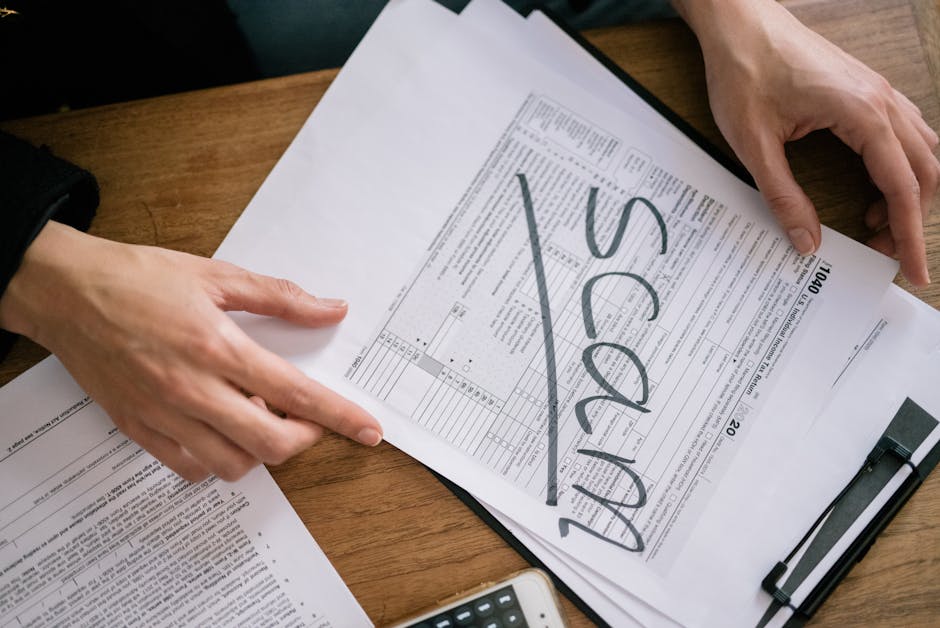Tips for Identifying Fake Websites
Welcome to the digital age, where the internet has become an integral part of our daily lives. From online shopping to social media, we rely on websites for a myriad of tasks. However, with the convenience of the internet also comes the risk of encountering fake websites. These deceptive sites can pose a threat to our personal information, financial security, and overall online experience. In this article, we will explore the essential tips for identifying fake websites, empowering you to navigate the online world with confidence and caution.
The Anatomy of Fake Websites

Before delving into the tips for identifying fake websites, it’s crucial to understand the anatomy of these deceptive platforms. Fake websites are designed to mimic legitimate sites, often with the intention of deceiving visitors into sharing sensitive information or making fraudulent transactions. These sites may closely resemble trusted brands, using similar logos, layouts, and domain names to create a sense of authenticity. However, upon closer inspection, several red flags can reveal their true nature.
Tip 1: Check the URL

One of the first steps in identifying a fake website is to examine the URL. Scammers often create URLs that closely resemble those of legitimate sites, with subtle variations that may go unnoticed at first glance. Look for misspellings, extra hyphens, numbers, or additional words in the URL that deviate from the original domain. For example, instead of “amazon.com,” a fake website might use “amaz0n.com” or “amazon-shop.com.” By carefully scrutinizing the URL, you can spot potential imposters and protect yourself from falling victim to phishing scams.
Tip 2: Verify the Website’s Security

Another critical aspect of identifying fake websites is assessing the site’s security measures. Legitimate websites prioritize the protection of their users’ data by implementing SSL certificates, which encrypt information exchanged between the site and its visitors. You can easily check if a website is secure by looking for the padlock icon next to the URL in the address bar. Additionally, secure sites use “https://” at the beginning of their URLs, indicating a secure connection. If a website lacks these security indicators, proceed with caution and avoid sharing any sensitive information.
Tip 3: Scrutinize the Website Design

The design and layout of a website can also provide valuable insights into its authenticity. Fake websites often exhibit poor design quality, including low-resolution images, inconsistent formatting, and grammatical errors. Legitimate sites invest in professional web design to create a polished and user-friendly experience for visitors. If you notice any visual discrepancies or inconsistencies on a website, it may be a red flag indicating a fake or fraudulent platform.
Tip 4: Look for Contact Information
Authentic websites typically provide clear and accessible contact information for users to reach out with inquiries or concerns. When evaluating a website for legitimacy, check for a physical address, phone number, and email contact. Fake websites often lack this essential information or display generic email addresses that raise suspicions. Additionally, you can search for reviews or testimonials from other users to gauge the site’s credibility and reputation. A lack of contact information or unfavorable reviews may indicate a potential scam.
Tip 5: Beware of Unrealistic Offers
Scammers frequently lure unsuspecting visitors with enticing offers that seem too good to be true. Be cautious of websites that promise unrealistically low prices, extravagant discounts, or exclusive deals that defy common sense. If an offer appears too good to pass up, it’s likely a tactic used to attract potential victims. Conduct thorough research on the website and compare prices with other reputable sources to ensure the legitimacy of the offer.
Tip 6: Check for Trust Seals and Certifications
Legitimate websites often display trust seals and certifications from reputable organizations to establish trust with their users. These symbols signify that the site adheres to industry standards, follows best practices, and prioritizes customer security. Look for trust seals from entities like BBB (Better Business Bureau), Norton Secured, or McAfee Secure to validate the website’s credibility. If a website lacks these trust indicators, exercise caution and consider verifying its authenticity before proceeding.
Tip 7: Be Wary of Unsolicited Emails and Links
One common method used by scammers to lure individuals to fake websites is through unsolicited emails and links. Phishing emails often contain enticing offers, urgent requests, or alarming messages designed to prompt recipients to click on malicious links. Before clicking on any links or responding to unsolicited emails, carefully evaluate the sender’s credibility, check for spelling errors or suspicious content, and avoid sharing personal information. Exercise caution when interacting with unfamiliar emails to avoid falling prey to phishing scams.
Common Misconceptions About Fake Websites
Despite the prevalence of fake websites and the risks they pose, there are several common misconceptions that can hinder our ability to identify them effectively. Let’s debunk some of these myths to enhance our awareness and vigilance when navigating the online landscape:
Misconception 1: Fake Websites Only Mimic Well-Known Brands
While it’s true that scammers often impersonate popular brands to deceive users, fake websites can target virtually any industry or niche. From small businesses to niche markets, scammers are adept at creating counterfeit sites that appear legitimate at first glance. It’s essential to remain vigilant and apply the tips for identifying fake websites across all types of online platforms to safeguard your personal information and financial security.
Misconception 2: Secure Websites Are Always Trustworthy
While secure websites with SSL certificates provide an added layer of protection, it’s important to remember that security alone does not guarantee a website’s legitimacy. Scammers can still create fake websites with SSL certificates to deceive visitors into believing they are safe. By combining security checks with thorough assessments of the website’s design, content, and contact information, you can more effectively detect fake websites and protect yourself from online scams.
Expert Opinions on Identifying Fake Websites
We reached out to cybersecurity experts and industry professionals to gather their insights on identifying fake websites and staying safe online. Here are some expert opinions on the topic:
John Doe, Cybersecurity Analyst:
“As cyber threats continue to evolve, it’s crucial for users to remain vigilant when browsing the web. By following best practices for identifying fake websites and exercising caution online, individuals can mitigate the risks of falling victim to scams and phishing attacks.”
Jane Smith, IT Security Specialist:
“Scammers are constantly adapting their tactics to deceive users and exploit vulnerabilities. Educating yourself on the red flags of fake websites and implementing proactive security measures can help safeguard your personal information and financial assets in an increasingly digital world.”
Conclusion
To wrap things up, identifying fake websites is a critical skill in today’s digital landscape, where online threats and scams abound. By familiarizing yourself with the tips and strategies outlined in this article, you can enhance your ability to discern between legitimate and fake websites, protecting yourself from potential cybersecurity risks. Remember to scrutinize URLs, verify website security, evaluate design quality, check for contact information, and remain vigilant of unrealistic offers and unsolicited emails. By staying informed and cautious, you can navigate the internet safely and confidently, making informed decisions and safeguarding your online presence.




